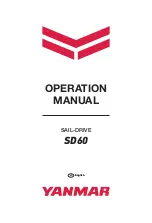
P6F104 User’s Manual
44
UART Mode Select:
The options are “Normal” (default), “IrDA”
and “ASKIR”. The IrDA is Hewlett Packard infrared
communication protocol with maximum baud rate up to 115.2K bps,
and the ASKIR is Sharp infrared communication protocol with
maximum baud rate up to 57.6K bps. The UART mode setting
depends on which type of infrared module is used in the system.
When set to “ASKIR” or “IrDA”, the UART 2 is used to support the
infrared module connected on the mainboard. If this option is not set
to “Normal”, a device connected to the COM2 port, will no longer
work.
Onboard Parallel Port:
This option is used to assign the I/O address for
the onboard parallel port. The options are “378/IRQ7” (defaults), “278/
IRQ5”, “3BC/IRQ7” and “Disabled” (disable the onboard parallel port).
Parallel Port Mode:
There are four options “SPP” (default), “EPP”,
“ECP”, “ECP+EPP”. Change the mode from “SPP” to the enhanced
mode only if your peripheral device can support it.
EPP Mode Select:
When set on-board parallel port to EPP mode, the
parallel port has option to use “EPP1.7”(default) or “EPP1.9”.
ECP Mode Use DMA:
When set on-board parallel port to ECP mode,
the parallel port has option to use DMA “3”(default) or “1”.
PWRON After PWR-Fail:
The options are “Off”, “On” or “Former-
Sts”. It gives the user the option to turn on the system power
automatically when the AC power failure happen, is especially useful
for the server application. To enable the Auto Power on feature, it has
to be set to “On”. When it sets to “Former-Sts”, system will remember
the power status (on or off) before power failure and set according
when AC power comes back.
GAME Port Address:
The options are “201”, “209” or “Disabled”. This
will set onboard Game port I/O Address.
MIDI Port Address:
The options are “330”, “300” or “Disabled”. This
will set onboard MIDI port I/O Address.
MIDI Port IRQ:
The options are “5” or “7”. This will set onboard MIDI
port IRQ.
Chapter 3: BIOS Configuration
















































